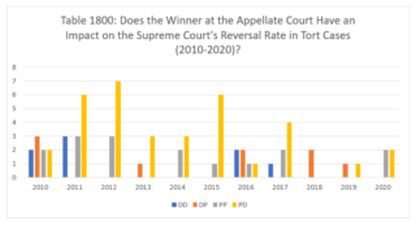- within Insolvency/Bankruptcy/Re-Structuring topic(s)
In this post and the next, we'll be reviewing the data for tort cases for the decade of 2010 through 2020. The overall reversal rate in tort cases was 55.56% in 2010 and 50% in 2011. It rose to 70% in 2012, 75% in 2013 and 60% in 2014, then went to 85.71% in 2015. In 2016, half the tort decisions were reversed. The reversal rate rose to 57.14% in 2017 before going to 100% in 2018 and 2019. Last year, the reversal rate was 50%.

In the past eleven years, far more of the Court's tort cases were won by plaintiffs than defendants below. The Court decided 51 cases won by plaintiffs at the Court of Appeal and reversed 68.63% of them. The Court decided only 17 cases won by defendants below, reversing 52.94%.

Join us back here next time as we continue our review of the data for the years 2010 through 2020.
Image courtesy of Flickr by Floyd Wilde (no changes).
The content of this article is intended to provide a general guide to the subject matter. Specialist advice should be sought about your specific circumstances.

